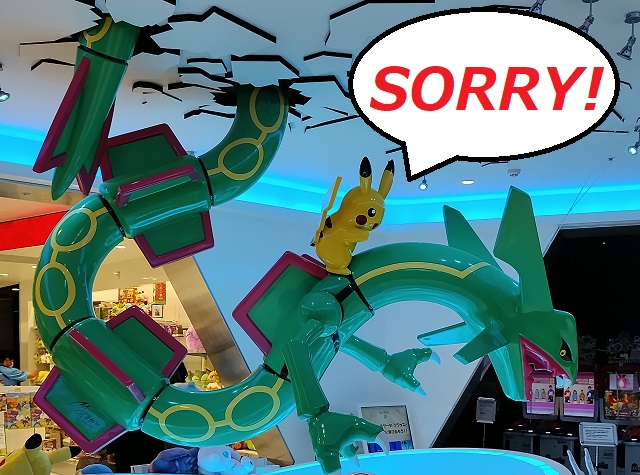
Even native Japanese readers had trouble spotting the problem in collaboration announcement.
Pokémon is such a huge pop culture force in Japan that the franchise is always working on at least a few creative projects with other famous organizations and individuals. For example, next month there’s a new line of accessories coming to the Pokémon Center megastores that’s a collaborative effort between Pokémon and fashion model Nicole Fujita.
In addition to accessories inspired by Pikachu and universally-agreed-upon-as-cute Piplup, Teddiursa, and Stufful, there are two other unexpected Pokémon species that are part of the collection. According to the above announcement from the Pokémon Center official Twitter account, there are also “items with Flygon and Hydreigon motifs, which are two of Nicole Fujita’s favorite Pokémon.”
However, three days after sending out the above tweet, the Pokémon Center posted an apology, informing everyone that it had written Nicole Fujita’s name incorrectly in the first tweet, and correcting the mistake by rendering her name in the proper way.
So what was the problem? Well, the initial tweet wrote the model’s name like this…
…but the correct way to write it is like this.
Having trouble spotting the difference? Maybe it’ll be easier if we put them right on top of each other.
▼ Top: wrong
Bottom: right
Still scratching your head? Don’t worry, you’re not alone, as plenty of people in Japan had trouble figuring out what was wrong too.
Your first guess might be to go looking for a difference between the first character for each version, but we’ll save you the time and eyestrain and let you know that all 18 strokes are identical in both, and also the correct way to write the “Fu” part of Fujita’s family name (since the Pokémon Center’s tweets are in Japanese, her name is written family name-first, as “Fujita Nicole”). No, where the Pokémon Center slipped up is with the third character.
But wait, aren’t they both just a pair of horizontal lines? Yes, but look carefully and you’ll see that in the incorrect character, the lines are longer than they are in the correct version, and there’s also a bit more vertical space between them. That’s because they’re actually two different characters. The top one is kanji, a character with a connected meaning used for indigenous Japanese words and names, while the bottom is katakana, a strictly phonetic character used for non-Japanese loanwords and names. Since New Zealand-born Fujita’s given name is Nicole, it’s written with the katakana, not the kanji.
▼ Top: kanji
Bottom: katakana
The difference isn’t something most people, even native Japanese readers, would be able to easily spot, though. Kanji and katakana aren’t ever mixed within a single family or given name, and while Fujita (藤田) is a common Japanese surname, the name 藤田二 doesn’t exist. Then there’s the fact that one of the pronunciations of the kanji 二 is “ni,” so even if someone did mentally register that the first katakana of Nicole’s name is replaced with the kanji 二, odds are they’d still read it as “Nicole.”
Add it all up, and Japanese Twitter users couldn’t help but chuckle a bit, even as the Pokémon Center said “We apologize for the error and wish to issue this correction.”
“Am…am I the only one who can’t find the difference?”
“I can’t either.”
“I spent about 10 minutes staring at my PC screen and still couldn’t figure it out.”
“Wasted so much time searching for some difference for 藤.”
“The person who caught this has some serious eagle eyes.”
“It’s like some new kind of ‘spot the difference’ activity book puzzle.”
All that said, the kanji 二 and the katakana ニ are different, and the difference is marginally more noticeable in other fonts.
Another problem is that while the two characters might look the same to the human eye, electronic devices know that they’re different right away, so using the wrong one in digital communications (like social media) can limit the reach of the message by making it harder for people who are spelling the name correctly to find the related tweet, website, etc. So keeping your 二 separate from your ニ is an important part of communicating effectively in Japanese, just like keeping your ソ separate from your ン.
Source: Twitter/@Pokemon_cojp via Hachima Kiko
Images ©SoraNews24
● Want to hear about SoraNews24’s latest articles as soon as they’re published? Follow us on Facebook and Twitter!
Follow Casey on Twitter, where his interests sit right at the center of a Venn diagram of anime, video games, and Japanese linguistics.